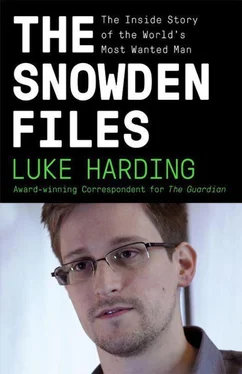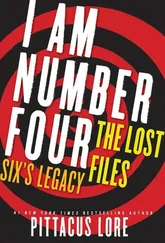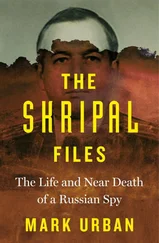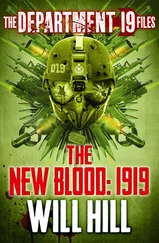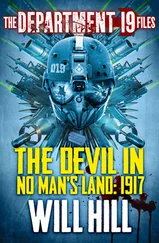The 60-second advert was screened to nearly 100 million Americans during the Super Bowl, and was subsequently hailed as one of the best ever. Isaacson writes: ‘Initially the technologists and hippies didn’t interface well. Many in the counterculture saw computers as ominous and Orwellian, the province of the Pentagon and the power culture.’
The commercial asserted the opposite – that computers were cool, revolutionary and empowering, instruments of self-expression. The Macintosh was a way of asserting freedom against an all-seeing state.
Almost 30 years later, following Jobs’s death in 2011, an NSA analyst came up with a smirking rejoinder. He prepared a top-secret presentation and, to illustrate the opening slide, he pulled up a couple of stills from Jobs’s commercial – one of Big Brother, the other of the blonde heroine with the hammer and the orange shorts.
Under the heading ‘iPhone Location Services’ he typed:
‘Who knew in 1984…’
The next slide showed the late Jobs, holding up an iPhone.
‘… that this would be Big Brother…’
A third slide showed crowds of whooping customers celebrating after buying the iPhone 4; one fan had inked the name on his cheek. The analyst’s pay-off line read:
‘… and the zombies would be paying customers.’
The zombies were the public, unaware that the iPhone offered the spy agency new snooping capabilities beyond the imagination of the original Big Brother. The ‘paying customers’ had become Orwell’s mindless drones.
For anyone who thought the digital age was about creative expression and flower power, the presentation was a shocker, and an insult to Steve Jobs’s vision. It threw dirt on the hippy kaftan and trampled on the tambourine. The identity of the NSA’s analyst is unknown. But the view appeared to reflect the thinking of an agency that in the aftermath of 9/11 grew arrogant and unaccountable. Snowden called the NSA ‘self-certifying’. In the debate over who ruled the internet, the NSA provided a dismaying answer: ‘We do.’
The slides, given to Poitras and published by Der Spiegel magazine, show that the NSA had developed techniques to hack into iPhones. The agency assigned specialised teams to work on other smartphones too, such as Android. It targeted BlackBerry, previously regarded as the impregnable device of choice for White House aides. The NSA can hoover up photos and voicemail. It can hack Facebook, Google Earth and Yahoo Messenger. Particularly useful is geo-data, which locates where a target has been and when. The agency collects billions of records a day showing the location of mobile phone users across the world. It sifts them – using powerful analytics – to discover ‘co-travellers’. These are previously unknown associates of a target.
Another secret program had a logo that owed a debt to the classic 1970s Pink Floyd album Dark Side of the Moon . It showed a white triangle splitting light into a colourful spectrum. The program’s name was PRISM. Snowden leaked a 41-slide PowerPoint presentation explaining PRISM’s function.
One slide emphasised the dates when Silicon Valley’s technology companies apparently signed up and become corporate partners of the spy agency. The first to provide PRISM material was Microsoft. The date was 11 September 2007. This was six years after 9/11. Next came Yahoo (March 2008) and Google (January 2009). Then Facebook (June 2009), PalTalk (December 2009), YouTube (September 2010), Skype (February 2011) and AOL (March 2011). For reasons unknown, Apple held out for five years. It was the last major tech company to sign up. It joined in October 2012 – exactly a year after Jobs’s death.
The top-secret PRISM program allows the US intelligence community to gain access to a large amount of digital information – emails, Facebook posts and instant messages. The rationale is that PRISM is needed to track foreign terrorists living outside the US. The data-collection program does not apparently require individual warrants. Rather, federal judges give their broad approval to PRISM under the FISA. By the time Snowden revealed PRISM, at least nine technology companies were on board. (The slides show Dropbox was slated to join; Twitter was missing.)
The most bitter and contentious question is how the NSA accesses this personal data. The key slide claims the data is collected ‘directly from the servers’ of the nine ‘US service providers’, Google, Yahoo and the rest.
Speaking in Hong Kong, Snowden was adamant this ‘direct access’ was indeed how PRISM worked. He told Greenwald: ‘The US government co-opts US corporate power to its own ends. Companies such as Google, Facebook, Apple and Microsoft all get together with the NSA. [They] provide the NSA direct access to the backends of all of the systems you use to communicate, to store data, to put things in the cloud, and even just to send birthday wishes and keep a record of your life. They give [the] NSA direct access, so that they don’t need to oversee, so they can’t be held liable for it.’
The leaked PRISM documents come from a training manual for NSA staff. It sets out several steps. First, a complex ‘tasking’ process. Analysts use or ‘task’ PRISM to find a new surveillance target. Next, a supervisor reviews the analyst’s search terms, known as selectors. After that the supervisor then has to agree with the analyst’s ‘reasonable belief’ the target lives outside the US. (This bar is pretty low, and defined as ‘51 per cent confidence’.)
Once the target has been agreed, PRISM gets to work. Sophisticated FBI equipment at the tech companies extracts matching information. The FBI has its own database to weed out – or ‘research and validate’, as the slide puts it – US persons whose data may have been sucked up by mistake. (This system, however, isn’t foolproof.) The FBI then gives this data to the NSA. An array of NSA analytical tools processes it. These include MARINA, which sifts and stores internet records, MAINWAY for call records, PINWALE which does video, and NUCLEON, voice.
Another slide says that the NSA has ‘real-time reporting capability’. In other words, the agency is notified each time a target sends an email, writes a text, begins a chat, or even fires up their computer.
Snowden’s slide gives some sense of just how important PRISM has become to US intelligence efforts. As of 5 April 2013, the US had 117,675 active surveillance targets in its PRISM database. According to the Washington Post , much PRISM-derived intelligence ends up on President Obama’s desk; it accounts for one in seven intelligence reports. British spies get to read it too.
The training manual gives the impression that Silicon Valley is actively collaborating with the NSA, albeit with varying degrees of enthusiasm. The corporate logos of all of nine tech companies appear on the top of each PRISM slide. Jobs’s Apple is among them. The logos look like shiny, colourful butterflies.
Snowden says it was his concerns over PRISM that pushed him towards whistleblowing. It was one of the first documents he leaked to Greenwald and Poitras. But PRISM was only one important element in a troubling picture. Over the last decade the US had been secretly working to gather practically all communications entering and leaving the US.
The NSA’s original mission was to collect foreign intelligence. But it appears to have drifted away from its original goal, like a vast supertanker floating away from its anchor. It is now sucking in a lot of domestic communications. In this new era of Big Data, the agency moved from the specific to the general; from foreign targeting to what Snowden called ‘omniscient, automatic, mass surveillance’.
The agency’s other big operation, its highly sensitive cable-tapping program, ran parallel to GCHQ’S British TEMPORA project and was codenamed UPSTREAM. It gives the NSA direct access to the fibre-optic cables carrying internet and telephone data into, out of and around the US.
Читать дальше
